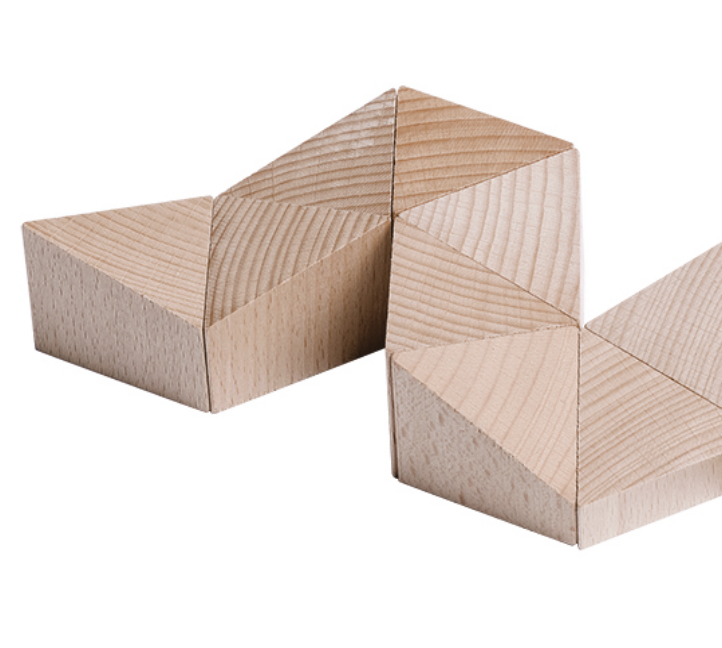Inventing the Game
The Jump from Paper
The story of the Logifaces game started in 2012 when we were invited to submit a tender to MOME’s toy design project, 1359 cm3. I came up with the concept over the course of just one night. I was thinking of introducing a three-dimensional shift into an existing two-dimensional game, Tantrix. Just like in Tantrix, you need to connect the elements according to a simple rule. Logifaces is more similar to Triomino, however, I did not know about Triomino at that time. Right after that, the very next morning we sketched up the various elements, which still remain the same today. The jury chaired by Ernő Rubik selected our design to be one of the finalists. A year later, in 2013, we won the Hungarian Design Award.
After the Design Award, we came up with the idea to use concrete, which has low investment costs for series production, instead of the more complicated and commonplace wood. In 2014, our design, now ready for mass production, debuted on the Indiegogo crowdfunding platform. The goal was 15,000 USD, which we managed to almost double with about 300 sets sold.
The concrete version became a special design object, a tabletop sculpture, and a frequent choice as a souvenir or a gift. This led us to introduce a wooden version as well, suitable for children and people who are more interested in playing than owning a design product.
Daniel Lakos — designer, inventor of the game

Professor László Mérő reviewed the game on this occasion
Good problem solving is the basis of everything, both in mathematics and design. Without this, we cannot
come up with solutions that overwrite our fixed schemes. This spirit of innovation and the search for innovative solutions characterises the creations in the design category. Why do we need new kinds of games? Isn’t the fruit of the last few thousand years enough, from dice to the Rubik’s cube, from the cob doll to the Barbie doll? One childhood is not enough for these either, and not even a whole life. But just as we need new literary works despite the fact that we haven’t even read the old ones, we also need new games that somehow resonate with our lives today. The toy, which was awarded this year’s Hungarian Design Award, presents a theme that is thousands of years old in a modern guise. Puzzle games already existed in ancient Babylon, but this game could not have existed then, as it is inspired by today’s computer graphics toolkit. That’s why we immediately feel at home. It’s good to think. More precisely: it is good to think in moderation, just as it is good to drink in moderation or climb a mountain. Many of us like to climb mountains, but few of us like to climb the Himalayas. The thing about good puzzle games is that they require just as much thinking as they are enjoyable, and as much as the joy of finding the solution is more than worth the sacrifice made for it, the mental effort. Psychologists have shown that the greatest pleasure comes from tasks that are medium to difficult, but not too difficult. This excludes not only tasks that are too difficult, but also tasks that are too easy: they may require little effort, but they are not worth that much. This prize-winning work in the design category has hit the level of difficulty that creates a pleasant challenge exactly, its clean formality playfully draws you into the complex world of spatial geometry.